Remembering Prince Phillip ‘on the air’
Warwick G4WMH offers his reminiscences following the RSGB President’s comments on the passing of its Patron HRH, The Prince Philip, Duke of Edinburgh, particularly with reference to his support for the Society’s 75th Anniversary Convention in 1988.
passing of its Patron HRH, The Prince Philip, Duke of Edinburgh, particularly with reference to his support for the Society’s 75th Anniversary Convention in 1988.
GB75AC was a Super Station to celebrate the RSGB’s 75th Anniversary Convention. We operated for 10 days from a temporary “cottage” located next to Pendigo Lake in front of the NEC.
The station was supported by all of the major importers and many UK manufacturers with peripherels and amplifiers etc. We also had Icom, Kenwood and Yaesu rooms.
The station had the capability of “all HF bands plus 2m & 70cm” and many mode operation for 24 hours a day. There was a very impressive antenna farm with 100′, 80′ and 60 ‘ towers and lots of wires.
We waved some 2m & 70cm satellite antennas, but lacked the manpower to make any satellite contacts.
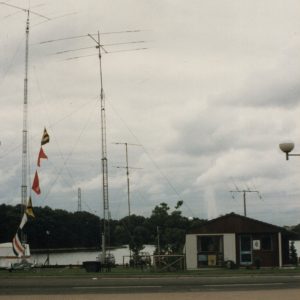
The camera shot was not wide enough to pick up all the antennas, some of which were quite a distance from the station including the verticals and wires.
The signal flags in the outside shot spell out GB75AC – they were full size navy flags – very heavy with lots of windage so we did not fly them high.
We were inundated with visitors, including foreign royalty, government representatives, presidents and officials from many overseas societies, some celebrities and at least one astronaut, not to mention many DXers from around the world, many of whom wanted to operate the station.
This was a time when RSGB Conventions were huge. In those days we knew the NEC well and amateur radio operation was common from a wide variety of public and trade shows.
There was great teamwork. Working closely with the RSGB, the station and the Prince’s broadcast was pulled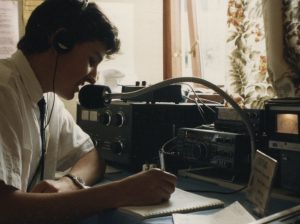 together by an enthusiastic team from midlands clubs – Bromsgrove, Midland, Solihull, South Birmingham, Sutton Coldfield, Wythall and others.
together by an enthusiastic team from midlands clubs – Bromsgrove, Midland, Solihull, South Birmingham, Sutton Coldfield, Wythall and others.
Guest operators from around the country signed-up to join the team, bringing amateur and professional expertise and borrowed kit to the station.
One thing was definitely missing – there was no computer logging in those days. Despite valiant efforts from team members we never got a stable network (or data). However, conditions were pretty good at the time and we really did work the world!
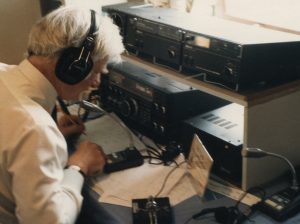
A great challenge was the planned live broadcast of the Patron’s speech which we actually achieved on time – simultaneous transmission which we broadcast to the world on 80, 40, 20, 15, 10, 2 and 70cm. What a pile up of call-ins once it was finished!
To make the broadcast we required a high qualty cable link from the centre of the NEC, running through underground passages and under road culverts to get from the exhibition to the station. And we had to get the very expensive cable undamaged back to the contractor who loaned it, ready for their professional installation just a few days later!
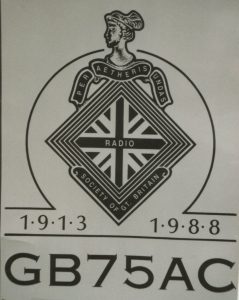 The next challenge (soon after the broadcast) was to exchange grettings messages between the Duke and Windsor Castle. We had media pressure for this to be an exchange between His and Her Royal Majesties. It seemed like a good idea at the time!!
The next challenge (soon after the broadcast) was to exchange grettings messages between the Duke and Windsor Castle. We had media pressure for this to be an exchange between His and Her Royal Majesties. It seemed like a good idea at the time!!
We considered all sorts of options, including some fancy encryption technology, which was great fun to play with but even the professionals could not guarantee that it would work on the day. We considered that it would be a nice thing to do but we only needed a nutter or two to ruin everything!
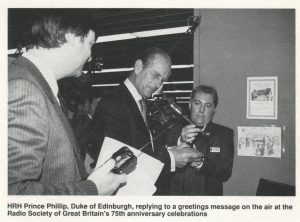 The solution was two fold: 1. The Duke would pass greetings with a representative of the Society who would be located at Windsor Castle and who would return the greetings and thanks for his patronage.
The solution was two fold: 1. The Duke would pass greetings with a representative of the Society who would be located at Windsor Castle and who would return the greetings and thanks for his patronage.
We were still concerned about unwanted interuptions and hit upon solution 2: We would not use an amateur band – we selected an “obscure” military frequency.
The Duke was standing in front of the then latest Yaesu showing a 40m frequency, whilst the microphone was actually connected to my trusty FT902DM in another room, with a separate antenna on the roof and controlled by me using a hand PTT and prompting the overs.
It all went very smoothly with a nod of approval from the Duke!


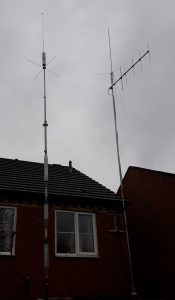
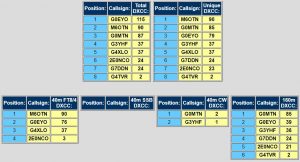

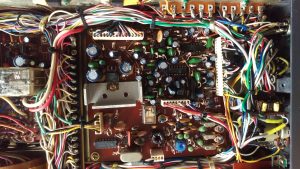 However, after several hours on receive, the audio suddenly cut out just leaving the S-meter registering signals but no audio. I assumed it was the audio chip that had failed. I checked and failed to find an audio signal at the input to the audio amp.
However, after several hours on receive, the audio suddenly cut out just leaving the S-meter registering signals but no audio. I assumed it was the audio chip that had failed. I checked and failed to find an audio signal at the input to the audio amp. 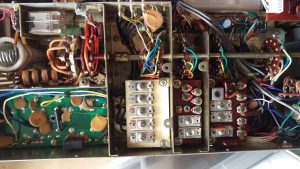
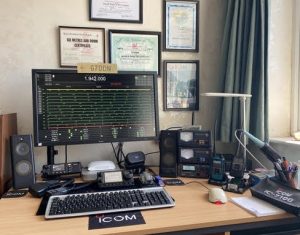
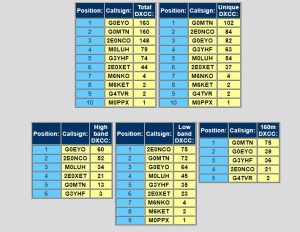 Chris G0EYO did well as usual, working 60 countries on the High Bands and the most countries across the three categories. Kevin 2E0NCO was top of the Low Band table with 75 countries.
Chris G0EYO did well as usual, working 60 countries on the High Bands and the most countries across the three categories. Kevin 2E0NCO was top of the Low Band table with 75 countries. 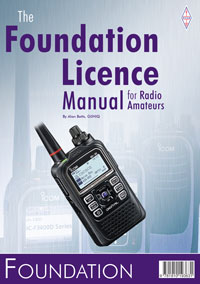 2021.
2021.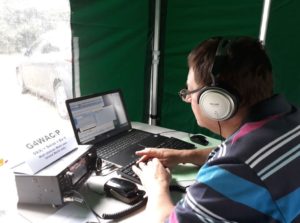 This will take place over an 8 week period with two lessons per week in the comfort of your own home and in a time of your choosing. We will deliver all the course material you need to complete the course but you will have to purchase the RSGB book “The Foundation Licence Manual” from the RSGB shop
This will take place over an 8 week period with two lessons per week in the comfort of your own home and in a time of your choosing. We will deliver all the course material you need to complete the course but you will have to purchase the RSGB book “The Foundation Licence Manual” from the RSGB shop 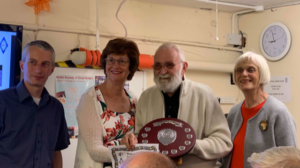
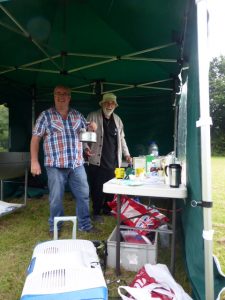 rewing up at the Club’s field day (with Tim M6OTN).
rewing up at the Club’s field day (with Tim M6OTN).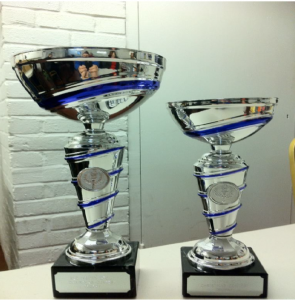 annual Christmas Contest.
annual Christmas Contest.  Chris G7DDN’s brand new
Chris G7DDN’s brand new 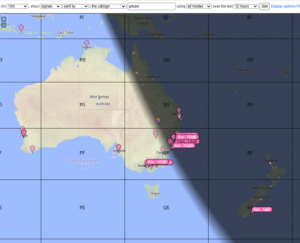
 In the ‘all bands/modes’ section, Simon G4TVR was first, and following close behind were Don G0NES and Ian M0LQY. Simon receives the Reg Brown G7OJO Trophy.
In the ‘all bands/modes’ section, Simon G4TVR was first, and following close behind were Don G0NES and Ian M0LQY. Simon receives the Reg Brown G7OJO Trophy.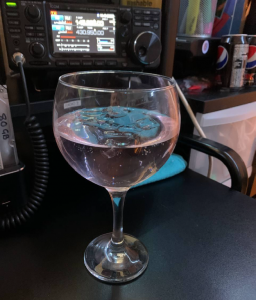 the 2m/70cm section, using a handheld, and Juliet M6RSC in the all modes section.
the 2m/70cm section, using a handheld, and Juliet M6RSC in the all modes section. 


 The bands have been buzzing with Wythall Radio Club members’ DX activity! And the results of our annual DX Challenge table are now available.
The bands have been buzzing with Wythall Radio Club members’ DX activity! And the results of our annual DX Challenge table are now available.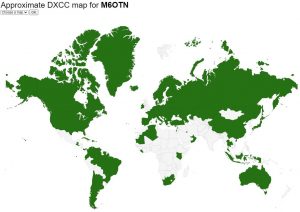 Tim used a mix of SSB (single sideband voice) and FT8 digital mode from either a Kenwood Ts 530 or a Yaesu 450d to a 1974 vintage pre-used ground mounted Hy-gain 18 AVT/WB – S vertical.
Tim used a mix of SSB (single sideband voice) and FT8 digital mode from either a Kenwood Ts 530 or a Yaesu 450d to a 1974 vintage pre-used ground mounted Hy-gain 18 AVT/WB – S vertical.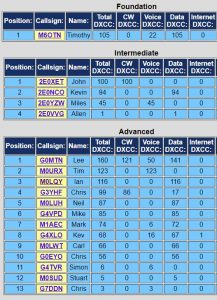
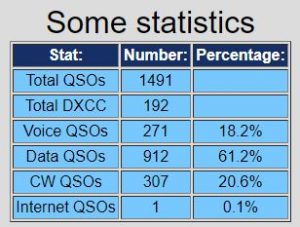
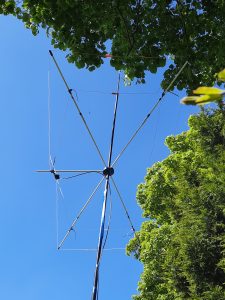 Contacts in 179 squares across 3 bands put Mike G4VPD in the lead in Wythall Radio Club’s 6m and up squares challenge.
Contacts in 179 squares across 3 bands put Mike G4VPD in the lead in Wythall Radio Club’s 6m and up squares challenge. 